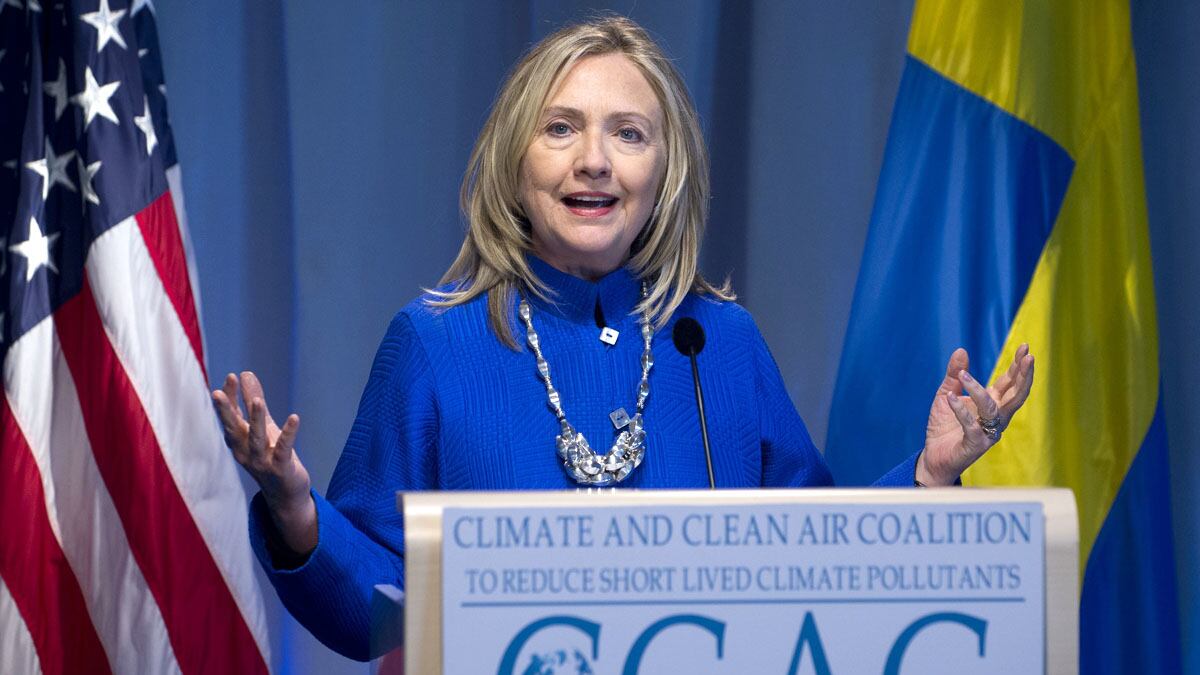This United Nations Rio+20 Earth Summit happening now is a reminder of how little has been achieved since 1992, the last time diplomats gathered there to focus on global environmental perils. The final segment of the Rio+20 meeting opened yesterday with no coherent agenda and is likely to close tomorrow with few practical outcomes.
Back in 1992 at the first Rio summit the world rightly made climate change its signature issue because sustainable economic growth and protecting the planet's ecology are impossible to achieve if the planet's climate system is way out of whack. But the bold vision for stopping global climate change hasn't inspired much serious action. World emissions of warming pollutants today are about 40 percent higher than they were in 1992 and will rise even higher in the future.
The good news is that it far from the big U.N. halls, where talk outweighs action, a new and much more effective climate change strategy is emerging. Earlier this month, Secretary of State Hillary Clinton fleshed out a scheme with Sweden and a few other like-minded nations to cut warming pollution by working in a small, nimble group rather than the whole United Nations. Supported by the U.N. Environment Program and an array of leading scientists, the effort focuses on controls that don't just slow global warming but also deliver tangible benefits to health and food security.

That's why Secretary Clinton's trip to Sweden was so important. It signals a new way to tackle global problems by investing in practical, local actions that align with the self-interests of the world's biggest polluters. So far, the effort is underfunded and hasn't yet enticed China and India. But the G8 announced its support last month at Camp David, and momentum is building.
Global warming is the hardest environmental problem that diplomats have ever confronted. Since the 1992 Rio conference they have made the problem even harder to solve by focusing mainly on carbon dioxide. Nearly all of this warming gas comes from burning fossil fuels, and it is very expensive to regulate. While all countries have found ways to make bold promises at diplomatic meetings, back at home all the biggest emitters—China, the U.S., and India among them—have done little to tackle this problem.
Among the few countries that adopted serious limits on carbon dioxide are the European nations, who have made a small dent in their pollution at large cost. Europe, however, is a tiny share of the global problem—today its emissions of warming gases are barely 15 percent of the world total. The lesson learned from two decades of diplomacy is that no long-term solution to the climate problem is possible without cutting carbon dioxide, but no long-term solution is politically feasible by starting with only this pollutant.
A fresh start to climate diplomacy would emphasize that carbon dioxide is not the only warming pollutant. At least 40 percent of current global warming can be blamed on four other types of pollutants: dark soot particles called black carbon, methane, lower-atmospheric ozone, and industrial gases such as chlorofluorocarbons (CFCs) and hydrofluorocarbons (HFCs), which are used as coolants in refrigerators. These pollutants have life spans of just a few weeks to a decade—much shorter than that of carbon dioxide. But although their tenure is brief, they are potent warmers. Emitting one ton of black carbon, for example, has the same immediate effect on warming as emitting 500-2,000 tons of carbon dioxide. Because the impacts of these short-lived pollutants on the climate are severe and swift, limiting them could curb warming quickly, allowing more time for serious effort to reduce carbon dioxide.
Cutting potent short-lived warmers is politically a lot more attractive than focusing on carbon dioxide. The needed technologies and policies already exist and are surprisingly inexpensive. Unlike reductions in carbon dioxide, whose main benefits of arrive only after decades of costly efforts, controlling these warmers would actually serve the immediate interests of developing countries, where pollutants such as soot and ozone damage vital crops and cause respiratory and heart diseases. A few hundred million tons of crops are lost to ozone smog every year; in India, air pollutants have decreased the production of rice by about 10 million tons per year, compared with annual output in the 1980s.
Globally, the inhalation of soot produced by cooking indoors already kills about 2 million people each year, mostly women and children living in extreme poverty. And because soot is dark, it traps heat from sunlight and thus speeds melting when it settles on snow packs and mountain glaciers—a direct threat to drinking-water supplies and agricultural lands that depend on glacier-fed river systems in China and India, such as the Ganges, the Indus, and the Yangtze. Arctic nations have also mobilized to cut soot pollution because it is also melting the polar ice cap. The U.S., a laggard on carbon dioxide, has been a leader in cleaning up soot, in part because states like California have cut local pollution because it harms public health. Fortuitously, all these local efforts also yield global benefits.
Soot, methane, ozone, and HFCs are a lot less sexy than flying to Rio and making bold promises. But with them, we can make a serious start in slowing dangerous global warming. And if it works it offers a model for practical ways to deal with the much bigger challenge of cutting carbon dioxide.






